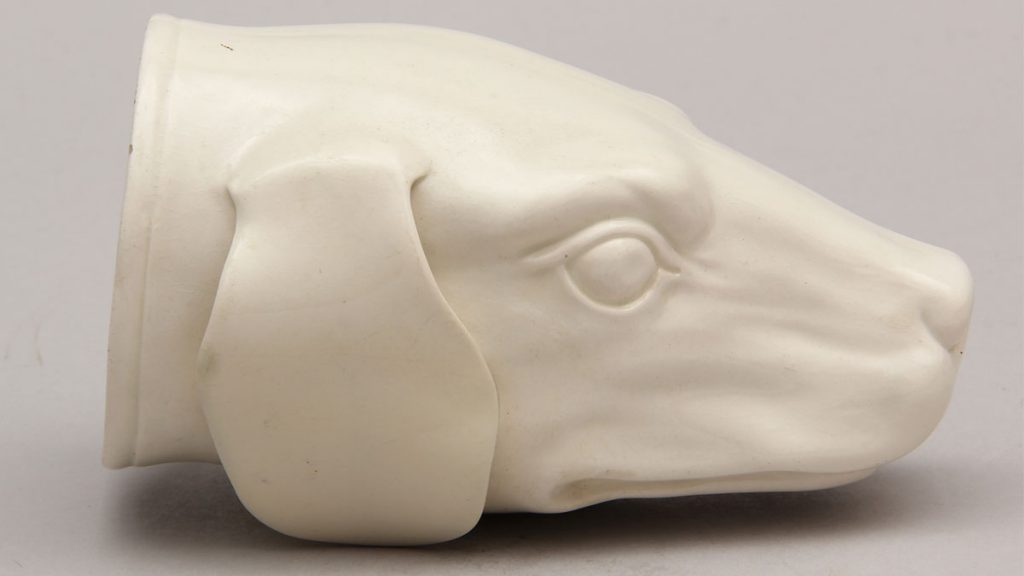Creamware is a type of fine earthenware with a cream-coloured body produced in England and Europe during the late eighteenth and nineteenth centuries. Various versions of creamware were developed by potters in the mid-eighteenth century. Josiah Wedgwood, however, deserves recognition for improving the formula in the 1740s and for transforming it into a popular, mass-produced commodity in the 1760s.
Creamware possessed many of the same practical and aesthetic qualities as porcelain, but could be produced for a fraction of the cost. For this reason, it quickly emerged as the ceramic tableware of choice for middle class consumers. Competition from creamware producers put great pressure on many English and European porcelain and earthenware factories, forcing some of them to modify their products and others to go out of business.
The creamware collection, which was donated by Jean and Ken Laundy, includes objects made in Staffordshire and illustrates the spread of the medium to other regions of England and to factories of continental Europe.
1. Hound’s Head Stirrup Cup (detail), England, c. 1770s. Gift of Jean and Kenneth Laundy, G08.2.45
2. Hound’s Head Stirrup Cup (detail), England, c. 1770s. Gift of Jean and Kenneth Laundy, G08.2.45
3. Charger (detail), France, Rouen, attributed to the Poterat manufactory, late 17th century, The Pierre Karch and Mariel O'Neill-Karch Collection, G15.8.1
4. Pair of Shoes (detail), England, possibly London, 1705-1715, Gift of George and Helen Gardiner, G83.1.549.1-2. Photographer: Toni Hafkenscheid
5. Dish with Scenes of the Abduction of Europa (detail), Italy, Faenza, Attributed to the Master of the Bergantini Bowl, c.1537, Gift of George and Helen Gardiner, G83.1.351
6. Bird Dish (detail), England, possibly Staffordshire, possibly by Thomas Toft (d.1689), c.1690-1710, Gift of George and Helen Gardiner, G87.1.3
7. Sculpture of a Stove (detail), Switzerland, Winterthur, c.1650, The Hans Syz Collection, G96.5.418

